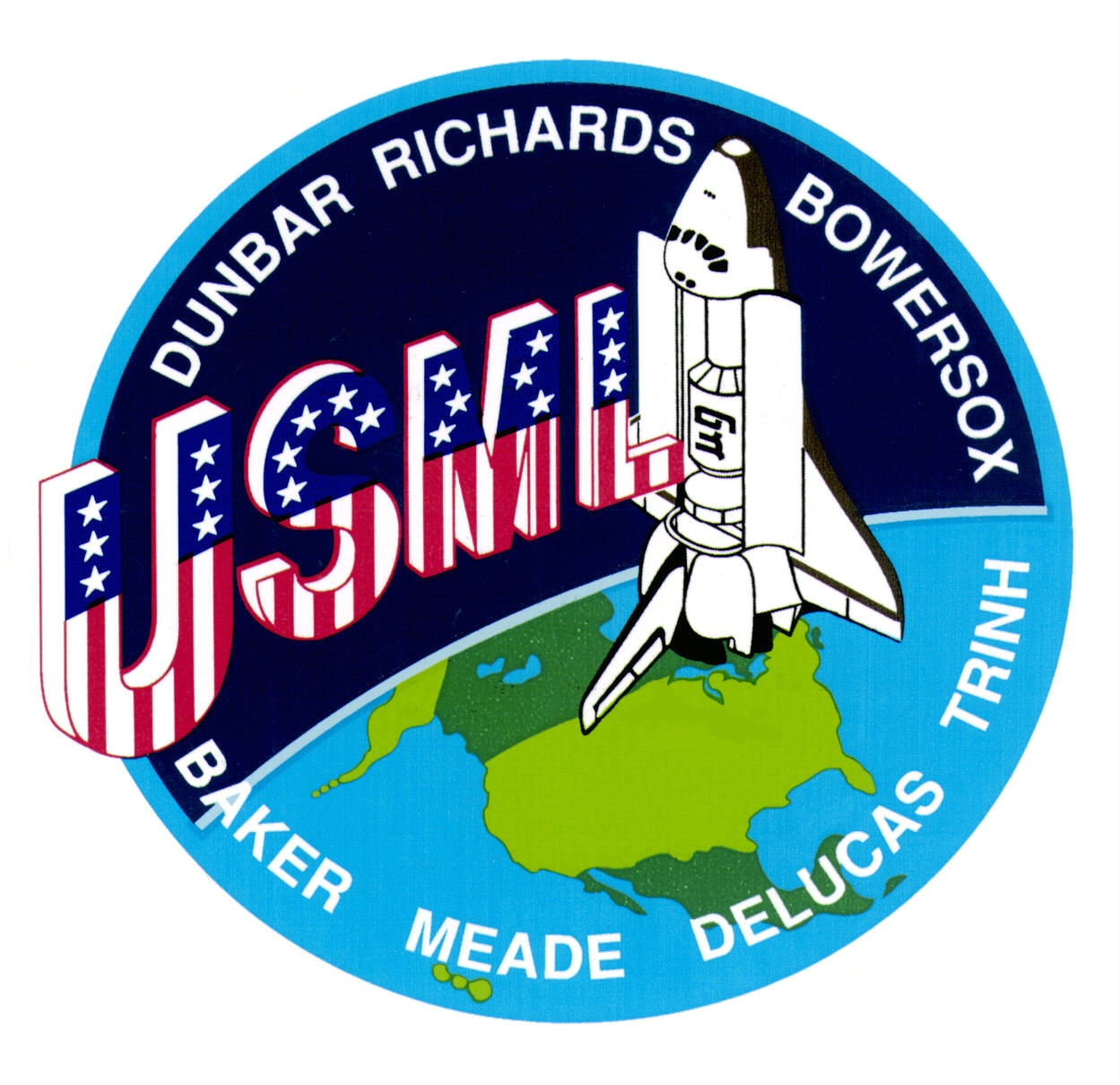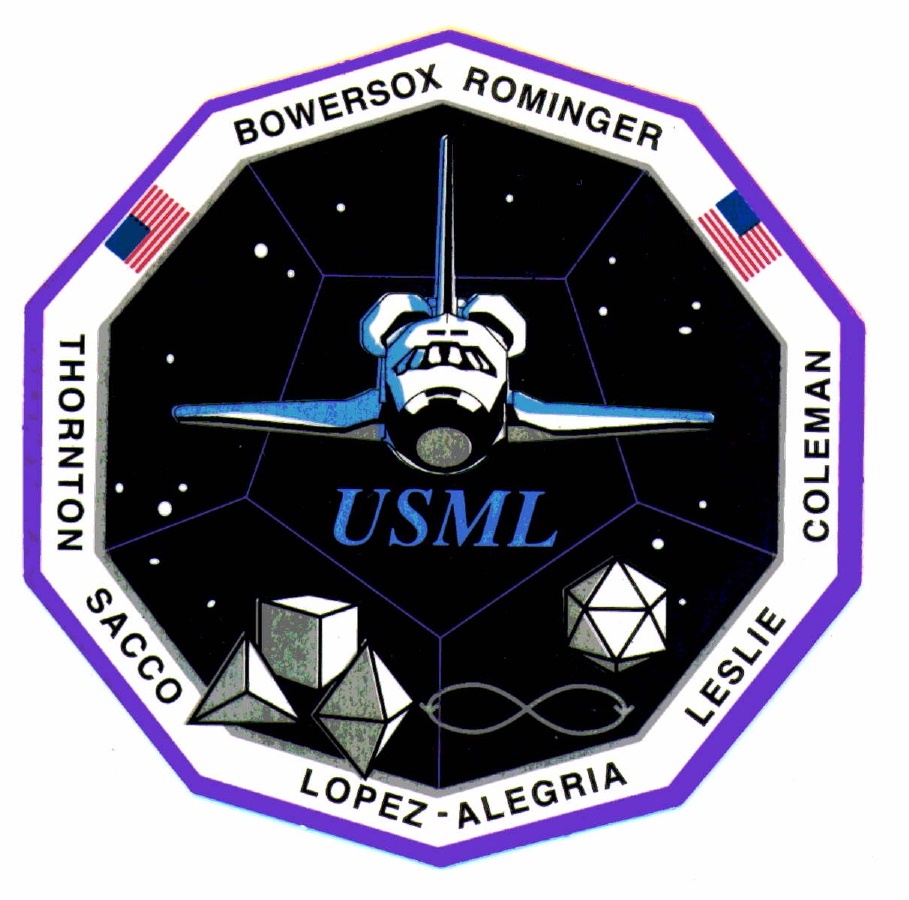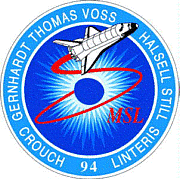Microgravity Research and Applications 1988 – 1997
“Space … The Final Frontier”
Professor Hmelo grew up in New York City with William Shatner’s words ringing in his ears, and dreamed of becoming an astronaut. Though life never took him in that direction, he has been fortunate to work closely with astronauts and to send his research into orbit.
Professor Hmelo first became aware of microgravity materials processing while working at the NSLS X-19C X-ray Topography beam-line with David J. Larson of the Grumman Corporate Research Center (GCRC). Together they characterized the defect structure of single crystals grown under reduced gravity conditions. This project sparked his imagination and motivated him to join Vanderbilt University’s Center for Microgravity Research and Applications in 1988, directed by former astronaut Taylor Wang. His early research was supported as a Principle Investigator on a NASA/University JOint VEnture in Space Science (JOVE) award with Vanderbilt University (1989 – 1993). Between 1989 and 1997 his research supported three flight experiments aboard the space shuttle Columbia, USML-1, USML-2 and MSL-1.
STS- 50 United State Microgravity Laboratory (USML-1) 1992
 Professor Hmelo managed a number of projects during the JOVE years, investigating the solidification of undercooled liquids, studying the influence of variable gravity on the aqueous growth of crystals, fabricating and characterizing spherical glass shells produced at a drop tube facility, designing and constructing two research instruments for studying the solidification of alloys, culminating in a JOVE award for curriculum innovation in space science education for ES 153 (Impact of Our Nation’s Space Program on Society) with Taylor Wang (1993).
Professor Hmelo managed a number of projects during the JOVE years, investigating the solidification of undercooled liquids, studying the influence of variable gravity on the aqueous growth of crystals, fabricating and characterizing spherical glass shells produced at a drop tube facility, designing and constructing two research instruments for studying the solidification of alloys, culminating in a JOVE award for curriculum innovation in space science education for ES 153 (Impact of Our Nation’s Space Program on Society) with Taylor Wang (1993).
Studies of Crystal Morphology as a Function of Gravity (MSFC)
He prepared large L-Arginine Phospate crystals from aqueous solution at various orientations with respect to earth’s gravity vector, visualized fluid flow using Laser Induced Fluorescence (LIF), and characterized these crystals for habit and defect structure using transmission x-ray topography (with Marcus Vlasse at the Space Sciences Laboratory)
Spherical Shell Fabrication at the Zero Gravity Drop Tube facility (MSFC)
Working together with James Allen, we relocated a Spherical Shell Generator assembly from JPL and Integrated this instrument to the 105 meter drop tube facility. He participated in a startup project to fabricate and characterize spherical shells of Lithium-Borate glass for use as Inertial Confinement Fusion (ICF) targets.
The High Gravity Centrifuge Facility (Vanderbilt)
Conceived with Corbett Battaile, the High Gravity Centrifuge was designed to carry two interchangeable payloads: an optical cell for imaging fluid flow under variable gravity conditions, and a furnace that was used for the micro-structural investigation of the directional solidification of Pb-Sn alloys as a function of gravity. The results were published as his M.S. Dissertation in 1992.
The Hybrid Electromagnetic-Acoustic Levitator (Vanderbilt)
Conceived with Sharbari Banerjee, the Hybrid Electromagnetic-Acoustic Levitator was designed for the containers processing of metal alloys. He studies of the surface tension of alloys in the V-Ti system were published as her Ph.D. Dissertation in 1994.
KC-135 “Vomit Comet” Campaigns (Houston Space Center)
Experiencing zero gravity is not something everyone gets to do. Professor Hmelo participated in two parabolic flight campaigns (40,000 ft) out of Ellington AFB in 1990 aboard NASA’s KC-135 “Vomit Comet” aircraft in support of the Drop Physics Module (DPM). In preparation for the missions he trained in the High Altitude Chamber at Wright Patterson AFB. During the flights he tested non-wetting coatings on DPM fluid injectors to improve the efficiency of drop deployment during theUSML-1 mission.
X-ray Methods: Synchrotron X-ray Microtomography (NSLS-1)
Professor Hmelo, in collaboration with Kevin D’Amico of Exxon Corporation, applied Synchrotron X-ray Microtomography to visualize voids and defects in laser welded materials, as well as hollow spherical shells composed of metal or glass. The work was performed using the X-10 beamline at NSLS-1.
STS-73 United States Microgravity Laboratory (USML-2) 1995
 Professor Hmelo was deeply involved in the success of Vanderbilt’s experiments using the Drop Physics Module (DPM) as a co-investigator of the fluid physics of shape oscillations of water drops and core centering bubbles under reduced gravity conditions. He investigated and remedied sources of uncontrolled specimen rotation in preparation for the flight experiment using a high fidelity mockup of the DPM acoustic chamber, provided by JPL, characterizing the rotational stability of spherical specimens suspended at 1G to map the parameters space for stable operations under 0G.
Professor Hmelo was deeply involved in the success of Vanderbilt’s experiments using the Drop Physics Module (DPM) as a co-investigator of the fluid physics of shape oscillations of water drops and core centering bubbles under reduced gravity conditions. He investigated and remedied sources of uncontrolled specimen rotation in preparation for the flight experiment using a high fidelity mockup of the DPM acoustic chamber, provided by JPL, characterizing the rotational stability of spherical specimens suspended at 1G to map the parameters space for stable operations under 0G.
Payload Crew Training (MSFC)
Professor Hmelo spent many, many hours training with Mission Specialist Cady Coleman and Payload Specialist Albert Sacco at the Payload Crew Training Complex (MSFC) reviewing and revising Functional Objectives for the flight experiment.Towards this end he developed a Macintosh-based video disk simulator, interfaced to the DPM training module, that familiarized the crew with reduced gravity phenomena otherwise undemonstrable on earth.
Flight Preparations (Kennedy Space Center)
Professor Hmelo participated in preparations of the DPM flight hardware at the Kennedy Space Center Operations and Checkout (O&C) to validate acoustic stability calibrations measured at Vanderbilt.
DPM Science Operations (MSFC)
Professor Hmelo supported mission operations from the Huntsville Space Payloads Operations Communications Center (POCC) during hours that the DPM was in operation. This involved monitoring DPM performance and participating in ground-to-air conversations with payload crew during science operations.
Drop and Bubble Data Analysis (Vanderbilt)
Modeled data on the dynamics of free drops and authored computer software for analyzing video tape of drop images on a frame-by-frame basis to extract data from the drop experiments.
Recognition (NASA)
Professor Hmelo’s contributions were recognized in a NASA Public Service Achievement Award for outstanding contribution to success of the USML-2 space shuttle mission (1995).
The complete technical report of scientific findings can be read here.
STS-94 Materials Science Laboratory (MSL-1) 1997
 Professor Hmelo supported the reflight of the Materials Science Laboratory and two glovebox experiments (1) Bubble and Drop Nonlinear Dynamics (BDND) and (2) Internal Flows in a Free Drop (IFFD) working with Eugene Trinh of JPL. As a simulation engineer for the MSL-1 mission, he trained the payload crew to operate acoustic positioners using the resources at the Payload Crew Training Complex (MSFC) in support of BDND. Flow visualization ground support experiments on acoustically levitated water droplets were performed at JPL in support of IFFD. Professor Hmelo was present at the POCC monitoring science operations during the flight.
Professor Hmelo supported the reflight of the Materials Science Laboratory and two glovebox experiments (1) Bubble and Drop Nonlinear Dynamics (BDND) and (2) Internal Flows in a Free Drop (IFFD) working with Eugene Trinh of JPL. As a simulation engineer for the MSL-1 mission, he trained the payload crew to operate acoustic positioners using the resources at the Payload Crew Training Complex (MSFC) in support of BDND. Flow visualization ground support experiments on acoustically levitated water droplets were performed at JPL in support of IFFD. Professor Hmelo was present at the POCC monitoring science operations during the flight.